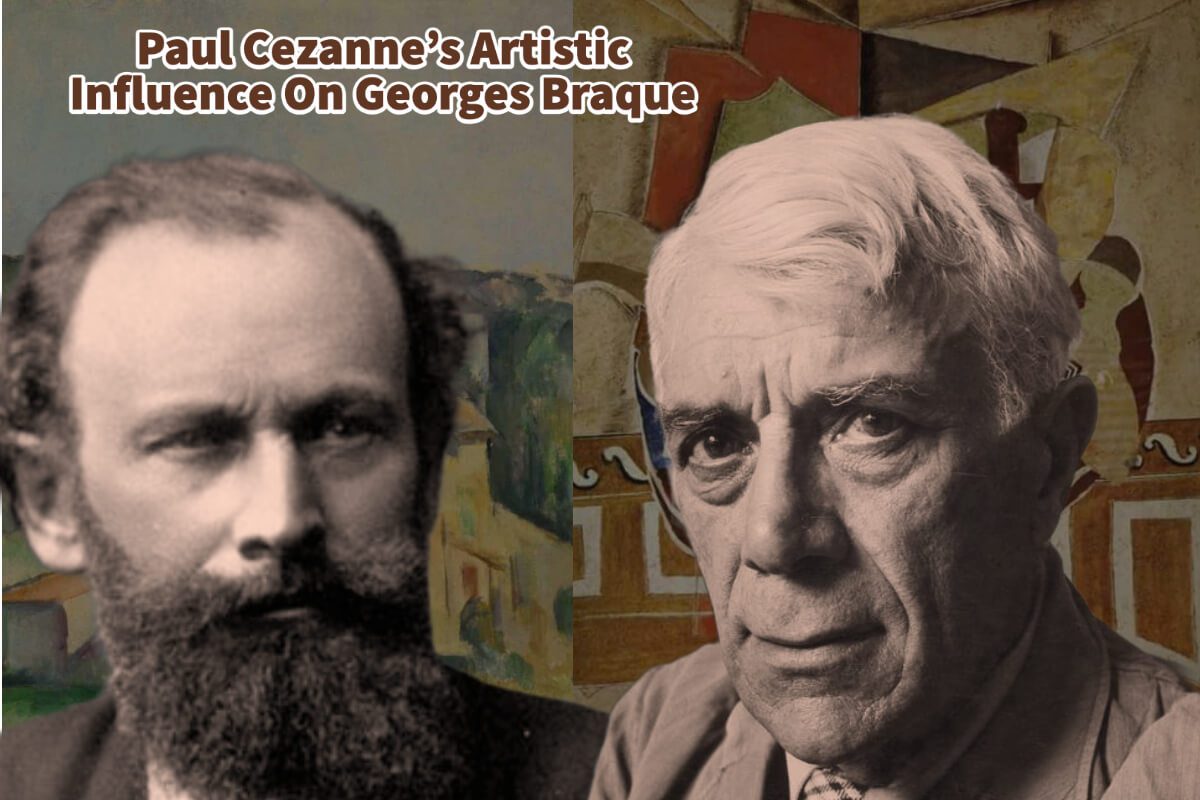Both Paul Cezanne and Georges Braque are considered two significant artists. There is no surprise that Paul Cezanne influenced George Braque.
The trajectory of modern art, especially the Cubist movement, owes a significant debt to the mutual relationship between the revolutionary artistic visions of Paul Cézanne and Georges Braque. While Braque, alongside Picasso, stands as a pillar of Cubism, it’s impossible to separate his evolution as an artist from the profound influences of Cézanne’s groundbreaking techniques and perspectives.
Table of Contents
- Paul Cézanne’s Influence On Georges Braque: A Deep Dive Into Cubism & Art
- Paul Cézanne And Georges Braque: Ten Touchstones Of Artistic Influence
- Breaking Down Objects Into Geometric Shapes
- Earthy Color Palette
- Emphasis On Multiple Perspectives
- Flatness And Two-Dimensionality
- Abstraction Over Realism
- Strong Structural Composition
- Simplified Backgrounds
- Exploration Of Form Over Detail
- Challenging Traditional Perspective
- Thick, Visible Brushstrokes
- Frequently Asked Questions
- Related Questions
Paul Cézanne’s Influence On Georges Braque: A Deep Dive Into Cubism & Art
Paul Cézanne, often dubbed the “father of modern art,” is renowned for his pivotal role in bridging the gap between 19th-century Impressionism and 20th-century Cubism. Among the artists deeply influenced by Cézanne’s work is Georges Braque, a pillar of the Cubist movement alongside Pablo Picasso.
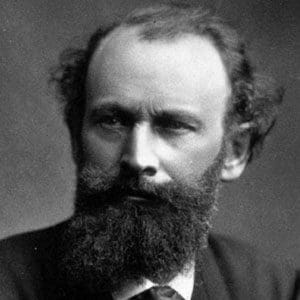
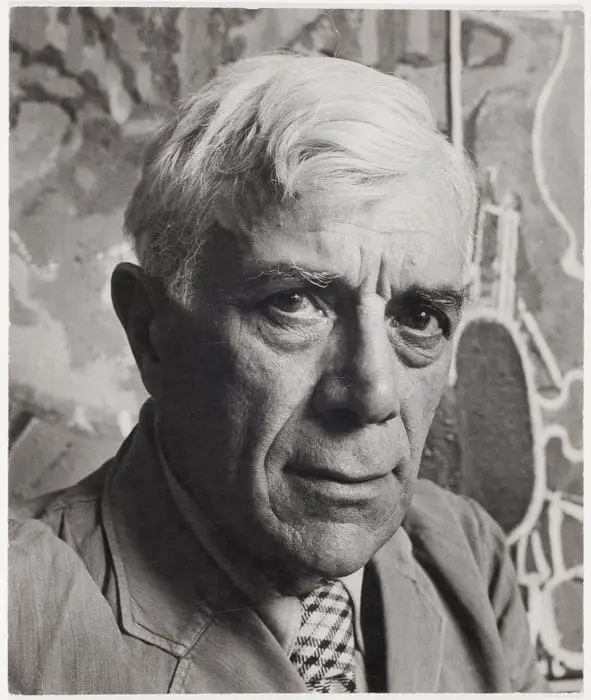
In the realm of Cubism, we witness the profound impact Cézanne had on Braque’s style. The similarities between Cézanne’s “Fields of Bellevue” and Braque’s “The Round Table” make it evident how significant this influence was.
Paul Cézanne And Georges Braque: Ten Touchstones Of Artistic Influence
The world of art is often shaped by the confluence of ideas, where one artist’s vision inspires and transforms another’s oeuvre. Such is the tale of Paul Cézanne and Georges Braque. Here, we delve into ten distinct ways Cézanne’s artistry profoundly influenced Braque, together shaping the modern artistic landscape.
In this article, we’ll explore ten ways in which Paul Cézanne molded Georges Braque’s artistic trajectory, forever altering the course of art history.
Breaking Down Objects Into Geometric Shapes
Cézanne’s approach to painting was revolutionary in that he sought to capture the underlying structure of objects by breaking them down into their primary geometric forms. This simplification of forms can be seen in “Fields of Bellevue,” where the landscape is reduced to shapes and volumes.
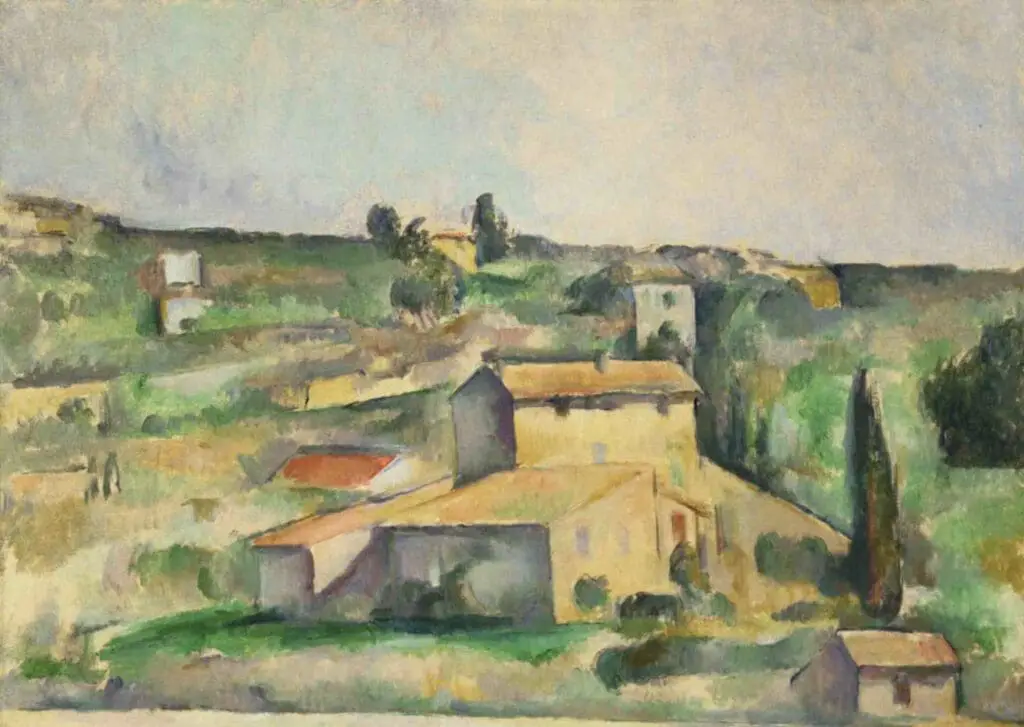
Braque magnified this technique in his Cubist works, clearly visible in “The Round Table.” Here, everyday objects are dissected into cubes, spheres, and cylinders, exemplifying the essence of Cubism.
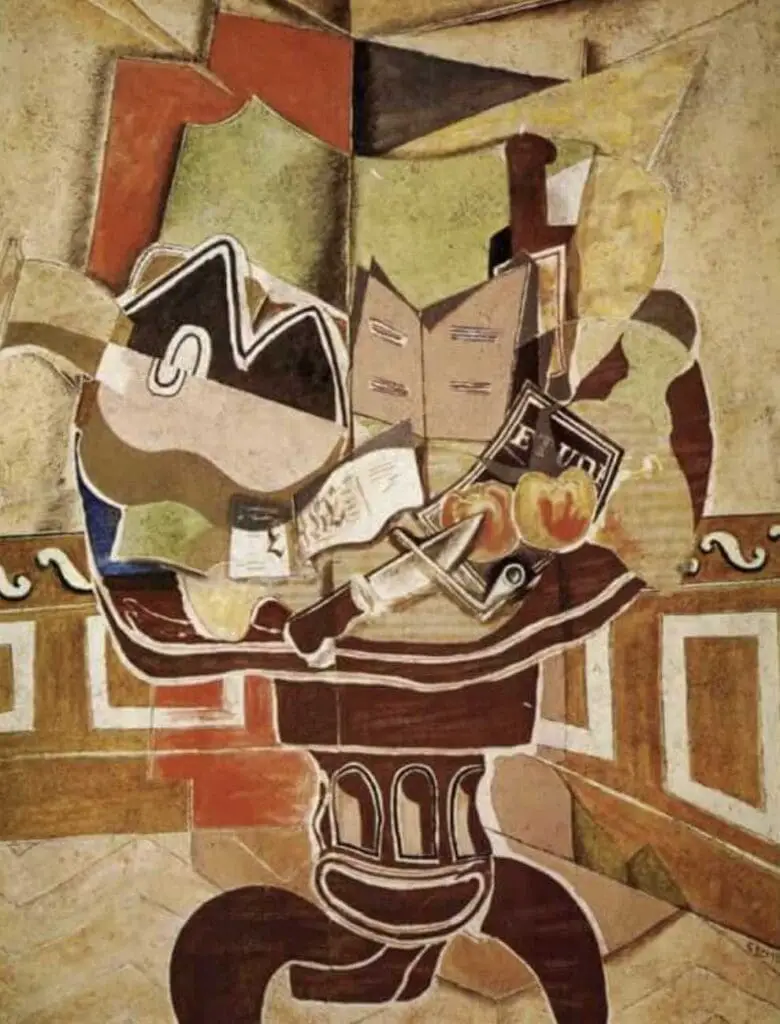
Earthy Color Palette
Cézanne and Braque often opted for muted, earthy tones in their paintings. “Fields of Bellevue” showcases a subdued palette, reflecting the natural world. Similarly, “The Round Table” utilizes a range of browns, beiges, and greens.
This shared color sensibility evokes a sense of cohesion and unity in their works while also distancing them from the vibrant hues of the Impressionists.
Emphasis On Multiple Perspectives
Cézanne’s work often hinted at simultaneously viewing objects from multiple angles. This notion is evident in his still lives and landscapes. Braque made it central to his Cubist works inspired by this revolutionary idea. In “The Round Table,” the viewer can discern the amalgamation of various perspectives as if simultaneously looking at the scene from different viewpoints.
Flatness And Two-Dimensionality
While Cézanne started to move away from the illusion of depth in his later works, Braque took it a step further. His Cubist paintings, including “The Round Table,” are intentionally flat, emphasizing the canvas’s two-dimensionality.
Abstraction Over Realism
Although Cézanne’s works were grounded in reality, he initiated a move towards abstraction. Influenced by this, Braque embraced abstraction fully in his Cubist phase, distorting and reconfiguring objects to the point where they were sometimes unrecognizable.
Strong Structural Composition
Both artists demonstrated a keen sense of structure in their compositions. Cézanne’s landscapes and still lifes are underpinned by a solid compositional framework.
Braque’s “The Round Table” exemplifies this structural approach, carefully placing every element to maintain balance and harmony.
Simplified Backgrounds
Many of Cézanne’s works simplified backgrounds to emphasize the subject matter. Braque adopted and intensified this approach in his paintings, often blurring the line between the foreground and background, as evident in “The Round Table.”
Exploration Of Form Over Detail
While earlier artists focused on intricate details, Cézanne shifted the focus to the primary forms of objects. This can be seen in “Fields of Bellevue,” where shapes take precedence over minute details. Braque inherited this focus, placing form at the heart of his Cubist works.
Challenging Traditional Perspective
Cézanne’s tendency to skew traditional linear perspective is another aspect Braque assimilated. In “The Round Table,” perspective is not adhered to in the classical sense, reflecting Cézanne’s influence and the Cubist desire to depict a more subjective reality.
Thick, Visible Brushstrokes
Cézanne’s brushwork, characterized by thick and often visible strokes, became a hallmark of his style. Braque incorporated this technique into his works, adding texture and depth to his paintings.
Paul Cézanne’s groundbreaking techniques and perspectives laid the foundation for the revolutionary Cubist movement. Georges Braque, influenced profoundly by Cézanne, expanded upon these ideas, leading to some of the most iconic artworks of the 20th century.
Through works like “Fields of Bellevue” and “The Round Table,” the legacy of Cézanne’s influence on Braque becomes palpable, underscoring the interconnectedness of the art world and the profound ways in which one artist can shape the trajectory of another.
Anita Louise Art is dedicated to art education, great artists, and inspiring others to find and create their art. We love art that uplifts and inspires. #ArtToMakeYouSmile! #ArtToMakeYouHappy!
If you want to see any of my art, you can find out more by clicking here. If you are interested in what inspires me and my paintings, you can discover more by clicking here.
We have a free newsletter and would love you to be part of our community; you can subscribe to the newsletter by clicking here. If you have any questions, I would be happy to talk to you anytime. You can reach me, Anita, by clicking here.
Subscribe to our Anita Louise Art YouTube Channel with great videos and information by clicking here.
Join us for our podcast “5 Minutes With Art.” Spend just 5 minutes a week with us to discover and learn about great art and artists. You can find out more about our podcast by clicking here.
Frequently Asked Questions
How did Paul Cézanne influence Georges Braque’s artistic style?
Paul Cézanne’s influence on Georges Braque was profound, particularly in terms of structure and form. Cézanne’s emphasis on geometric shapes and multiple perspectives greatly impacted Braque’s approach to depicting objects and landscapes.
What specific elements of Cézanne’s work influenced Braque’s Cubist movement?
Cézanne’s exploration of complex geometric shapes and his revolutionary approach to depicting space influenced Braque’s move towards Cubism. Braque adopted Cézanne’s techniques of breaking down objects into basic forms and representing them from multiple viewpoints.
Did Georges Braque directly acknowledge Paul Cézanne as an influence?
Yes, Braque openly acknowledged Cézanne’s influence on his work. He credited Cézanne for inspiring him to move away from traditional perspectives and explore new ways of representing objects and scenes.
How did Cézanne’s use of color impact Braque’s artistic palette?
Cézanne’s subtle and nuanced use of color had a significant impact on Braque’s approach to color. Braque, inspired by Cézanne, began to experiment with a more subdued and earthy color palette in his Cubist compositions.
In what ways did Cézanne’s influence manifest in Braque’s early Cubist works?
In Braque’s early Cubist works, you can see the influence of Cézanne in the fragmentation of objects and the exploration of multiple viewpoints. The structured, yet fragmented, compositions reflect Cézanne’s influence on Braque’s evolving style.
Did Cézanne’s influence on Braque extend beyond the visual elements of their art?
Yes, Cézanne’s influence went beyond visual elements. Both artists shared a dedication to the process of artistic creation, emphasizing the importance of the artist’s experience and interpretation in the creation of art.
How did Cézanne’s impact on Braque contribute to the development of Cubism as a movement?
Cézanne’s impact on Braque played a pivotal role in the development of Cubism. Together with Picasso, Braque expanded upon Cézanne’s ideas, pushing the boundaries of representation and laying the groundwork for the revolutionary Cubist movement.
Were there specific paintings by Cézanne that had a notable influence on Braque’s work?
Cézanne’s still life paintings, particularly those featuring multiple perspectives and geometric forms, had a notable influence on Braque. Paintings like “The Basket of Apples” by Cézanne left a lasting impression on Braque’s exploration of form and structure.
How did Cézanne’s influence on Braque contribute to the evolution of Braque’s style over time?
Cézanne’s influence on Braque marked a transformative period in the artist’s career. As Braque absorbed and adapted Cézanne’s techniques, his style evolved from Fauvism towards the more structured and abstract forms characteristic of Cubism.
Related Questions
Which Ear Did Van Gogh Cut Off Left Or Right? And Other Facts
Vincent Van Gogh cut off his left ear; he painted several paintings of himself with the bandaged ear. The events leading up to the ear cutting were because of artistic disagreements with the artist Paul Gauguin. Cutting off his left ear made the local newspaper’s front page and set off a chain of events that would change Vincent Van Gogh’s life forever.
By clicking here, you can discover more by reading Which Ear Did Van Gogh Cut Off Left Or Right? And Other Facts.
Why Did Vincent Van Gogh Commit Suicide?
Vincent Van Gogh had a mental illness; many believe he was manic-depressive. He was also sad and lonely and felt a huge financial burden. He committed himself to the mental hospital for treatment, but all this made it very difficult for him to do what he loved most, which was to paint.
By clicking here, you can learn more by reading Why Did Vincent Van Gogh Commit Suicide?
Why Are Vincent Van Gogh’s Paintings So Valuable?
Vincent van Gogh was an extremely prolific artist who painted over 900 works of art during his short lifetime. His work is appealing, and his use of colors and brushstrokes help make his art genuinely unique. He inspired many art movements and artists, and Van Gogh left us a legacy of his art and his letters and thoughts.
By clicking here, you can discover more by reading Why Are Vincent Van Gogh’s Paintings So Valuable?

